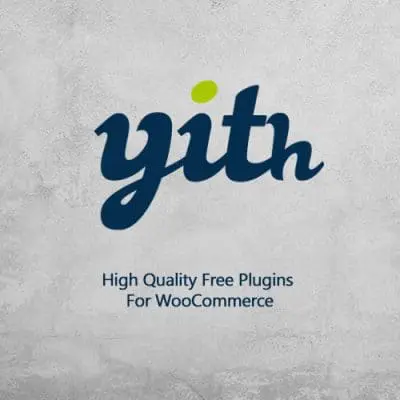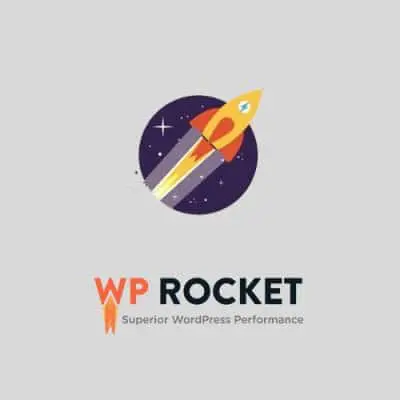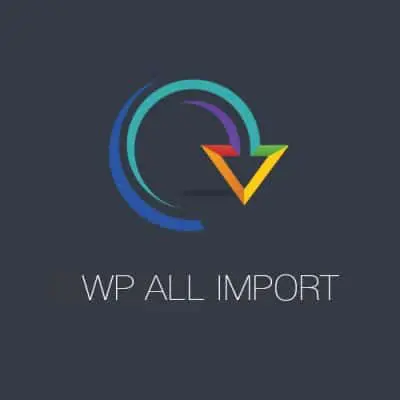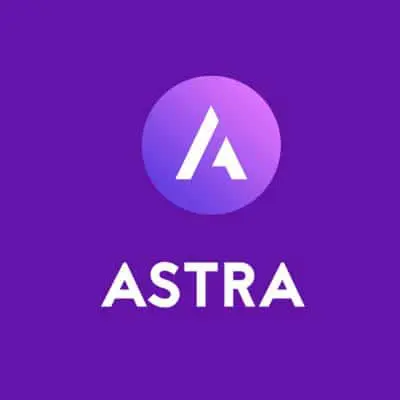If you are currently using SEO plugins like All in One SEO, Rank Math, SEO Framework, Smartcrawl SEO, Squirrly SEO, WP Meta SEO, WPseo, etc., instead of WordPress Yoast SEO, you can seamlessly transfer your settings to Yoast. To do this, first deactivate the plugin you are using, then install the Yoast SEO plugin. Navigate to Import and Export >> Import from other SEO plugins and select the plugin you are using. Yoast will import your existing SEO settings smoothly.
Firstly, you should know that there is no such thing as the best WordPress SEO settings. Every setting varies depending on the purpose of the site. In this article, I will explain the settings I use on my blog with Yoast SEO, one of the best WordPress plugins, and explain what might be right or wrong.
Installing Yoast SEO
1. First, go to Plugins >> Add New from your WordPress Admin panel.
2. You will see a screen like the one above. Type the name of the Yoast SEO plugin in the search bar in the upper right corner and search.
3. Click the Install Now button for the Yoast SEO plugin that appears on the left side of the screen (with 5+ million active installations).
4. After clicking the Install Now button, it will take a few seconds to install the plugin. Once the installation is complete, the Install Now button will change to an Activate button.
Finally, click the Activate button to activate the Yoast SEO plugin you installed. The installation process of Yoast SEO is that simple. We can now move on to the settings.
First Thing to Do After Installing Yoast SEO
To use all the settings of the WordPress Yoast SEO plugin that I explained below, you must first activate this settings panel from the Yoast SEO plugin’s management panel.
To do this, go to Admin Panel >> SEO >> General >> Features tab and turn on the features under this tab, then click Save Changes.
# If you are not using the premium version of the plugin, you cannot activate the features marked as Premium.
Also, whether or not to enable the Usage tracking option here is entirely up to you. This feature is related to whether you want to allow Yoast to collect data from your site to improve the plugin.
General – WordPress Yoast SEO
After installing the plugin, you can access the management panel of the plugin from the SEO tab in the WordPress admin panel.
After reaching the SEO >> General section, the Dashboard tab will open. On this page, there is a link called Configuration Wizard under the First-time SEO configuration title.
Whether or not to use this wizard is entirely up to you. In this guide, we will go through all the steps you will encounter in the wizard.
Again, you can see a few notifications under the Notifications title on this page. For now, you do not need to consider these notifications. You can close the notifications by clicking the eye icon next to them.
Features – WordPress Yoast SEO
– SEO Analysis: This feature makes Yoast SEO the best SEO plugin. If you do not enable this feature, there is no point in using the plugin. Enabling this will activate the keyword analysis section under the posts.
When creating content, the Yoast SEO plugin provides you with SEO rules to follow based on the keyword you enter in the focus keyword section within the Yoast SEO Meta box, located right below the post editor.
Even if you do not fully understand how this feature works right now, do not worry because you will understand it much better when you read the Yoast SEO usage section later in this article.
– Readability Analysis: When you activate this feature, the plugin analyzes your posts not only in terms of direct SEO criteria but also in terms of readability.
The functionality of Yoast SEO’s readability feature is not very advanced. It evaluates readability based on the length of paragraphs and sentences.
For example, if you write a post with short sentences and paragraphs that do not exceed 3-5 sentences, Yoast SEO will give you a perfect score for readability.
However, if the opposite is true, Yoast SEO will show your posts as having low readability and provide suggestions for improvement.
A post with paragraphs of 3-5 sentences and sentences made up of simple, understandable words tends to have a high reading rate. This is a proven fact.
The aim is to keep the reader engaged without overwhelming them. Yoast SEO’s readability feature is based on this accepted and data-proven principle.
– Cornerstone Content: This refers to the most important content on your site, the articles you want to rank highest on Google.
To mark a post as Cornerstone Content in Yoast SEO, open the post editor, find the Yoast SEO meta box, and turn on the Cornerstone Content switch.
Cornerstone content is used and applicable for main category articles, which I also mentioned in my article about getting on the first page of Google.
For example, if you have 10-20 related articles on your site that you summarize in a long post (5-10k words), and link to each of these summaries, this is cornerstone content.
When you mark content as cornerstone content, Yoast SEO helps you build an internal linking structure by suggesting related posts to link to.
– Text Link Counter: This feature shows the number of internal links from a post and the number of internal links a post has. Seeing these numbers helps you create a healthier internal linking structure.
– Insights and Link Suggestions: These two features are available with the premium version of Yoast.
– XML Sitemaps: Enabling this feature automatically creates a sitemap.
Since WordPress 5.5, a sitemap is automatically generated and updated as you add content.
To view your sitemap, you can follow this URL:
siteaddress.com/wp-sitemap.xml
However, you can also use the sitemap provided by Yoast by enabling the XML Sitemaps feature. There is no functional difference between the two.
If you enable it, you can view the Yoast sitemap at this URL:
siteaddress.com/sitemap_index.xml
When you enable Yoast’s sitemap, the URL of WordPress’s built-in sitemap will automatically redirect to Yoast’s sitemap URL, avoiding any conflict between the two sitemaps.
– Admin Bar Menu: Enabling this adds a shortcut to the WordPress Admin Bar at the top of your site, making the Yoast SEO plugin more easily accessible.
– Security: When you set this to Enabled, the advanced settings of the Yoast SEO meta box under posts, pages, categories, tags, etc., will be restricted to admins only.
This is the correct setting because these advanced settings can exclude your content from Google indexing or set it as canonical to another post.
Therefore, if you have editors working with you and do not trust them fully, leave this setting Enabled.
Integrations
– Semrush Integration: Semrush is an online SEO tool that analyzes websites in detail. When you enable this feature, Yoast can suggest keyword search volumes for your content as you type your focus keyword in the Yoast meta box.
I will explain how to do this later in the article. You can turn this feature on.
– Ryte Integration: Ryte checks your site weekly to see if it is indexable and accessible by search engines. If there is an issue, it notifies you through the WordPress admin panel.
The other two options on the Integrations page are for the premium version of the Yoast plugin.
Webmaster Tools
I explained how to register your site with Google in my article titled “WordPress SEO and What to Do First After Opening a Blog/Site”. The Webmaster Tools section does exactly this.
As an alternative method, you can register your site with search engines through Yoast SEO Webmaster Tools.
# When registering your site with Google, enter the verification code provided by Google Search Console in the Google Verification Code field under Webmaster Tools, then click Save Changes. After that, return to Search Console and click Verify. Your site will be verified by Google.
You can do the same for Baidu, Bing, and Yandex from this section. If you have already registered with these search engines, you can skip this section.
Search Appearance – Yoast SEO
– Title Separator: This is entirely a visual feature and has no functional SEO impact. It is a symbol added automatically to your SEO titles after the post title.
The title separator creates visual distinction among search results, which is important for potential visitors. Below is an example of this.
– Homepage & Post Page: Here you can customize the title and description of your homepage. You can do your SEO settings for the homepage using the Yoast SEO meta box on your homepage.
– Knowledge Graph and Schema.org: Sometimes when you search on Google, you see an information card on the right side with images, products, reviews, descriptions, etc.
This is provided by Schema.org, which includes data related to that search term. This is mostly displayed as structured data.
Over time, extra information such as date, author, reviews or ratings, categories, etc., can appear below your site address in search results.
This is possible because Yoast SEO adds structured data to your site according to schema.org standards, helping search engines process this data to show the best results.
The Knowledge Graph and Schema.org section on this page is for your site’s general search result data. If your website is an organization, choose Organization, enter your Organization Name, and add your Logo.
If you have a personal blog, choose Person and configure the settings accordingly.
This way, after a certain period, an information card related to your site may appear on the right side of search results.
Content Types
Yoast SEO Content Types allow you to set default settings for the Yoast SEO meta box under the post and page panels.
These settings will appear
on the SEO meta box when you open a post or page. Instead of making these settings every time you create a post, you can set the defaults here.
For posts:
– Show Posts in Search Results: I recommend selecting “Yes” for posts and pages. This is your content, and if you don’t allow it to be indexed, it won’t show up in search results.
– SEO Title: I recommend using the default title settings. This will automatically set your post’s SEO title as follows:
Post Title – Site Name
For example, if you write a post titled “Yoast SEO Settings,” and your site name is “WordPress SEO Guide,” your SEO title will be:
Yoast SEO Settings – WordPress SEO Guide
The default title setting provided by Yoast is:
%%title%% %%page%% %%sep%% %%sitename%%
If you wish, you can change this to:
%%title%% %%sep%% %%sitename%%
The difference is that the former includes the page number of the post if it is a multi-page post, while the latter does not.
– Meta Description: I recommend leaving this blank. If you fill it in here, the default description will be the same for all posts.
Instead, write a unique meta description for each post using the Yoast SEO meta box under the post.
For example, if you fill in:
%%excerpt%%
The description will be the first 55 words of your post. It’s better to customize this description for each post, as it significantly impacts your post’s click-through rate from search results.
– Schema Settings: These settings affect how your content appears in search results. By default, you can leave it as Article.
However, if your posts belong to a specific type, you can select it accordingly. For example, if your posts are book reviews, you can choose Book as the type.
For pages:
The settings here are the same as the post settings. You can set them up similarly, allowing pages to be indexed.
Taxonomies
Taxonomies include categories, tags, and custom taxonomies. Here you can set default settings for these taxonomies, similar to the content types.
– Categories: By default, categories are indexed, but I recommend setting them to “No”. Categories are not as important as posts for search engines. By setting them to “No”, you avoid duplicate content issues.
– Tags: Similar to categories, I recommend setting them to “No”. Tags are useful for internal linking but do not add much value to search engines.
– Format: These are for different post formats like standard, video, audio, etc. I recommend setting them to “No”.
Media
– Redirect Attachment URLs: When you upload an image to your post, WordPress automatically creates a separate page for that image.
These pages are thin content and do not add value to your site. Redirect them to the image itself by setting this option to “Yes”.
Archives
These settings are for author and date archives.
– Author Archives: If you have a single-author blog, set this to “No”. If you have multiple authors, set this to “Yes” to index their posts.
– Date Archives: I recommend setting this to “No”. Date archives create duplicate content, which is not good for SEO.
– Search Pages: These are the results pages for search queries on your site. You can set them to “Yes”.
– 404 Pages: These are the error pages when a page is not found. Leave them as they are, as they do not need indexing.
**Breadcrumbs**
Breadcrumbs are navigation aids that help users see where they are on your site. They are also useful for SEO, providing a better user experience.
Enable Breadcrumbs and configure them according to your site’s structure.
RSS
Yoast SEO allows you to add content before or after your posts in RSS feeds. This is useful for adding backlinks to your site and preventing content scraping.
You can add a link to your original post using the following template:
The post %%POSTLINK%% first appeared on %%BLOGLINK%%.
Social
In this section, you can connect your site with social media platforms like Facebook, Twitter, etc.
– Accounts: Add your social media profiles here.
– Facebook: Enable Open Graph metadata. This helps Facebook to display your posts correctly.
– Twitter: Enable Twitter Cards metadata.
– Pinterest: Verify your site with Pinterest.
– Google My Business: Connect your site with your Google My Business account.
Tools
Yoast SEO provides several tools to help you manage your site’s SEO:
– Import and Export: Import or export Yoast SEO settings.
– File Editor: Edit your site’s robots.txt and .htaccess files.
– Bulk Editor: Edit SEO titles and descriptions in bulk.
– Text Link Counter: See the number of internal links in your posts.
– Optimize Site: Optimize your database for SEO.
– Restore Default Settings: Reset Yoast SEO to default settings.
Premium
If you are using the premium version of Yoast SEO, you get additional features like multiple focus keywords, internal linking suggestions, and more.
In this article, I have explained the basic settings of Yoast SEO. You can use these settings as a starting point and customize them according to your needs.
For more detailed information, refer to the official Yoast SEO documentation.














